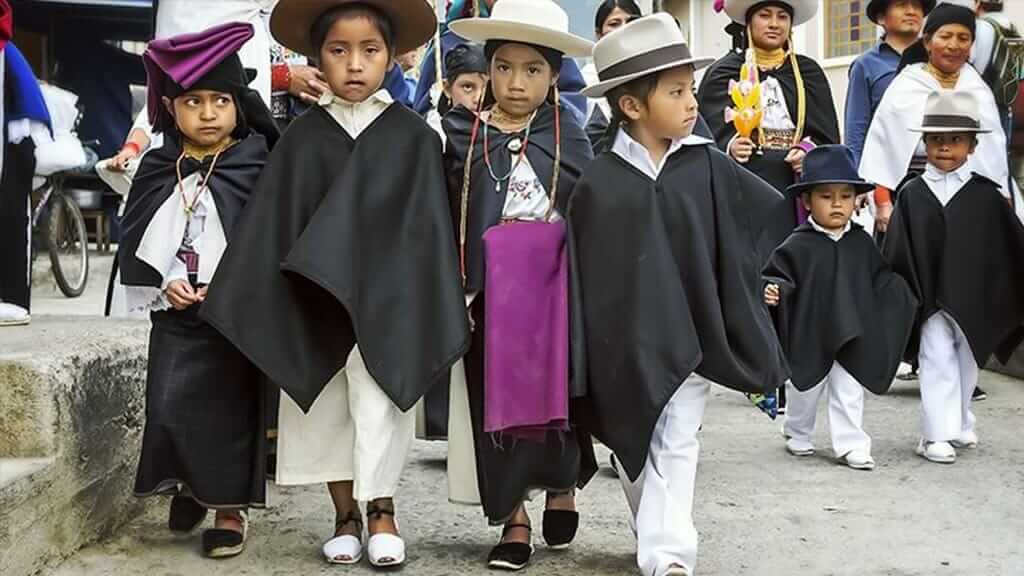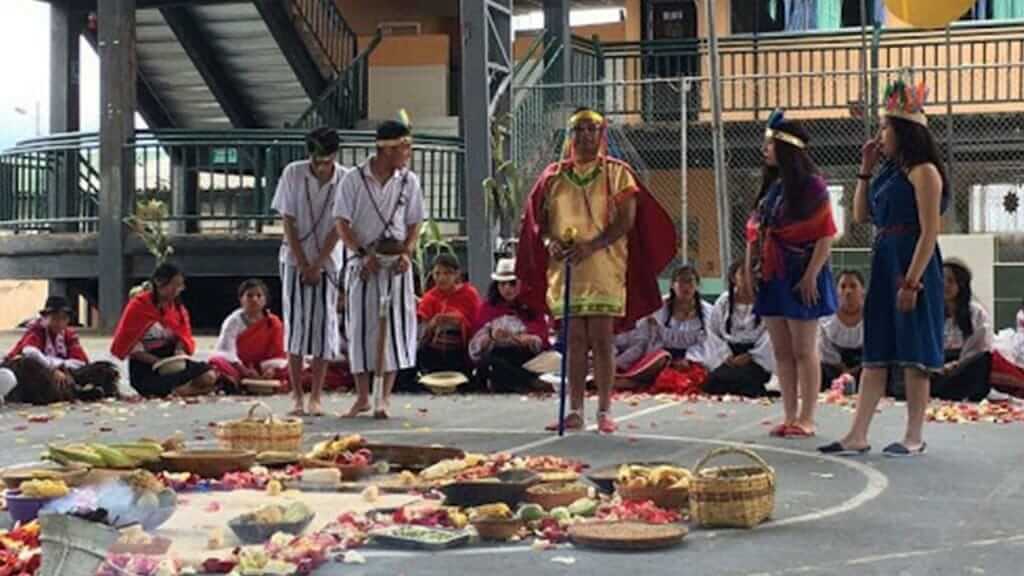Carnival has an ethnic flavor in the Sierra Norte (northern Andes). There are mestizo, indigenous and Afro-Ecuadorian celebrations. In the town of Peguche, near Otavalo, the Kichwa fiesta known as Pawkar Raymi features 11 days (February to early March) of crafts fairs, sports competitions, and music. One of the rituals is called tumarina. It’s a kind of baptism with water and flower petals.
Pawkar Raymi means the Fiesta of the Flowering (of the crops). It’s a time to give thanks to Pacha Mama for her bounty. This is also the time of the year when indigenous merchants and musicians who work overseas come home to be with their families. It’s estimated that 10,000 Otavaleños earn their living abroad. They are considered the country’s cultural ambassadors. They usually stay for up to two months.
People in Tungurahua province, in Ecuador’s central Andes, begin celebrating at dawn. There are two rituals. The first is called the “Path of Purification” which goes from the main village square to the waters of Manzanapamba. People walk barefoot, enduring the pain of rocks and thorns on the path. This is part of the purification, to show a direct connection with Pacha Mama. During this pilgrimage, people sing songs in Kichwa.
As the procession reached the waters, the singing grows louder. Women lead the way, dressed in colorful costumes, especially with red colors, a symbol of fertility, joy, and prosperity. The women enter the water first, followed by the men. After prayers, wreaths are laid in the cold waters. Participants say the earth’s energies cleanse their bodies of impurities and spiritual burdens. It’s also believed when single women enter the waters, Pacha Mama blesses their wombs, granting them the ability to give life.
Jucho is a fruit drink consumed in indigenous homes as part of the rituals associated with Pawkar Raymi, and by mestizos as a symbol of Carnaval. It’s served hot or cold and has a sweet and aromatic fragrance. Jucho is consumed in all provinces where the capulí (capulin cherry) grows, such as in the Central Sierra. In the Tungurahua province, a large number of capulí trees grow wild. Pawkar Raymi is in February when the trees are in bloom. The cherries are cooked with peaches in syrup, with corn starch and cassava added to give the drink thickness. According to the Yachaks (shamans), the cherries are a symbol of fertility.
Our Indigenous Markets & Culture tour features, one of the largest, most colorful and important in the whole of Latin America. Contact our Happy Gringo travel advisors for more information 🙂


